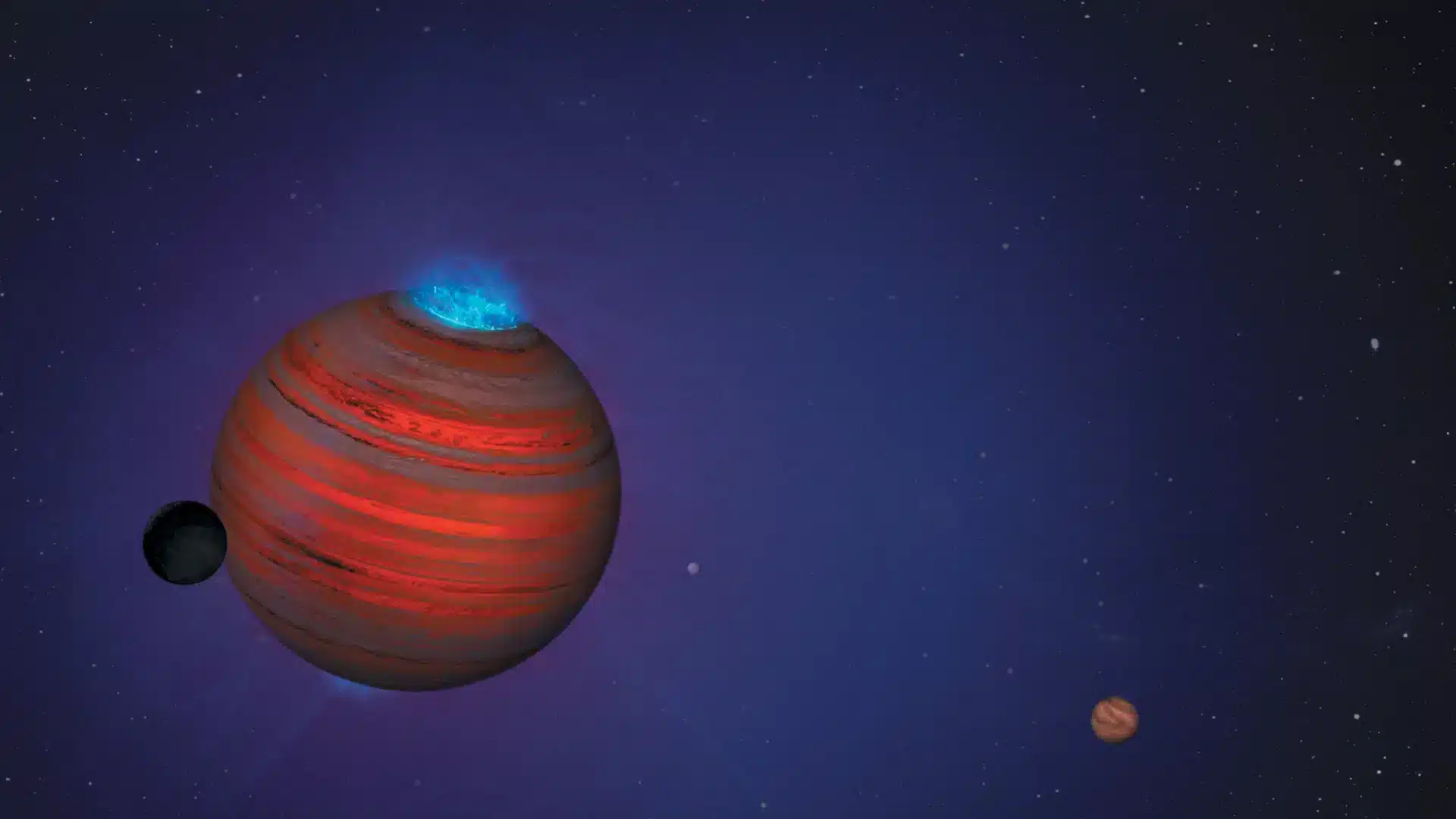New Insights into Brown Dwarf HD 206893 B

Recent high-resolution spectroscopic observations have shed light on HD 206893 B, a brown dwarf orbiting the star HD 206893. This research, conducted using the Keck Planet Imager and Characterizer (KPIC), has revealed vital information about the brown dwarf’s atmospheric composition, mass, and formation. Located approximately 133 light-years from Earth, HD 206893 B is situated within a circumstellar debris disk, making it a subject of significant interest in the study of substellar objects and their roles in planetary systems.
Observational Data and Findings
A study published on the arXiv pre-print server details the high-resolution spectroscopy performed on HD 206893 B. The research team, led by Ben Sappey from the University of California, San Diego (UCSD), employed a forward-modelled Bayesian approach to analyze the spectral data. This method allowed them to extract precise atmospheric parameters from the observations.
The findings indicate that HD 206893 B has a radius approximately 1.11 times that of Jupiter and a mass around 22.7 times that of Jupiter. The effective temperature of the brown dwarf is estimated to be about 1,634 K, while its age is calculated to be around 112 million years. These measurements provide a clearer understanding of the brown dwarf’s characteristics and its position within the broader context of substellar objects. The data collected not only enhances our knowledge of HD 206893 B but also contributes to ongoing research into the formation and evolution of brown dwarfs in various environments.
Formation and Atmospheric Composition
The research also delves into the formation scenario of HD 206893 B. The atmospheric carbon-to-oxygen (C/O) ratio was found to be 0.57, which closely aligns with the solar value. This ratio is crucial for assessing planetary formation mechanisms. The findings suggest that HD 206893 B likely formed through core accretion rather than disk fragmentation. Core accretion typically occurs at distances closer to the host star, while disk fragmentation usually leads to planet formation at much greater distances.
Given that HD 206893 B is located approximately 11.62 AU from its host star, the evidence leans towards core accretion as the primary formation mechanism. This insight is significant as it helps scientists understand the processes that lead to the formation of brown dwarfs and their interactions with surrounding materials in their environment. The atmospheric composition and formation history of HD 206893 B may also provide clues about the conditions present in the early solar system.
Future Investigations
Looking ahead, researchers emphasize the need for further studies to refine the understanding of HD 206893 B’s formation and atmospheric properties. Observations using the Near Infrared Spectrograph (NIRSpec) onboard the James Webb Space Telescope (JWST) have been proposed as a next step. The advanced capabilities of JWST could yield more precise measurements of elemental ratios, such as carbon-to-sulfur (C/S), which may illuminate the brown dwarf’s formation history and its relationship with the surrounding debris disk.
Continued monitoring of the HD 206893 system is expected to enhance our knowledge of substellar objects and their complex interactions within planetary environments. As researchers gather more data, they hope to unravel the mysteries surrounding brown dwarfs and their roles in the cosmos. This ongoing investigation will not only deepen our understanding of HD 206893 B but also contribute to the broader field of astrophysics and planetary science.
Observer Voice is the one stop site for National, International news, Sports, Editor’s Choice, Art/culture contents, Quotes and much more. We also cover historical contents. Historical contents includes World History, Indian History, and what happened today. The website also covers Entertainment across the India and World.

